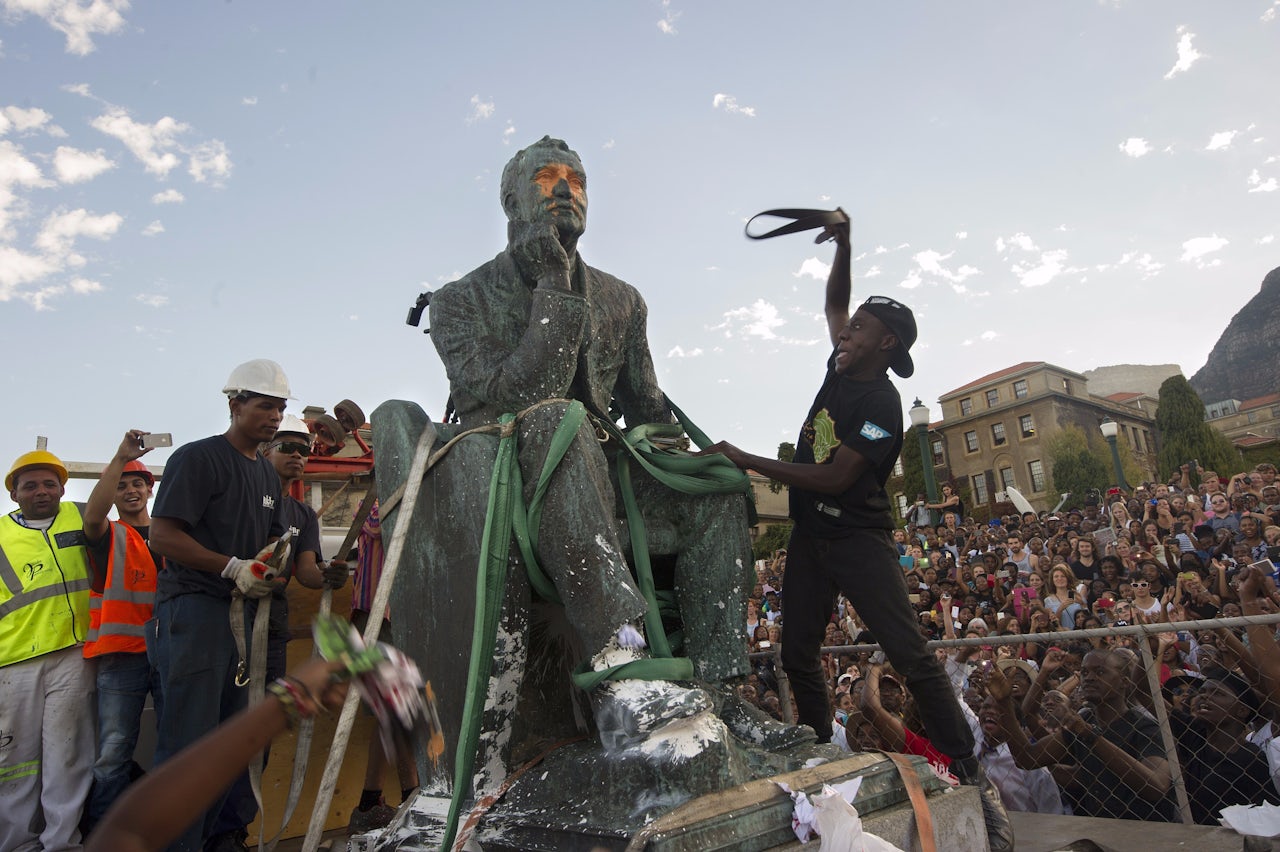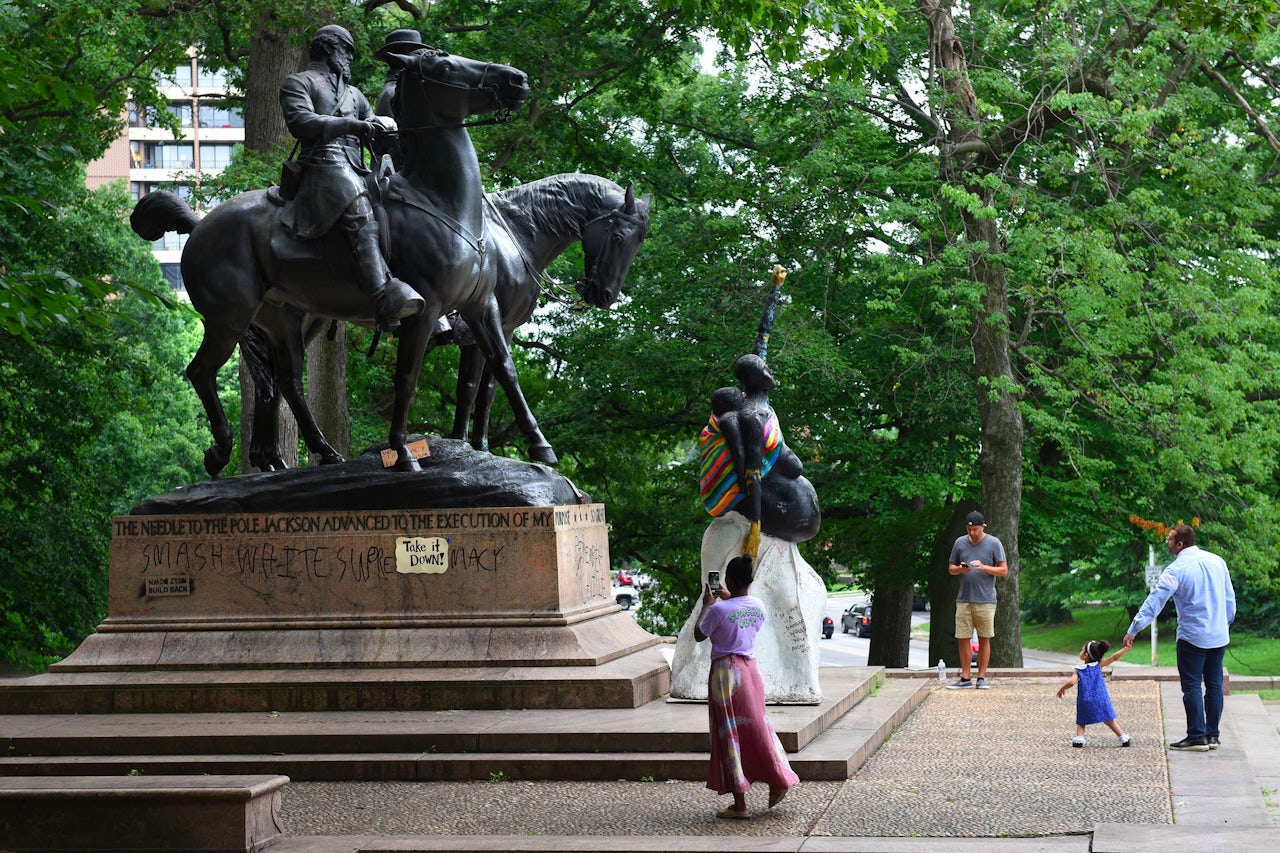Cape Town, 2004. Second semester of my first year at the University of Cape Town, and our English tutor hands out copies of the opening paragraphs of Dickens's Bleak House. She is trying to get us to see how the simple present tense works to produce a feeling that is both timeless and immediate. See how it seems like it could be happening at any time but also right this second?, she asks.
I didn’t really see. But the words stuck in my head, the way they are supposed to, and I spent the next few months with them under my breath. I used to say them to myself on the 15-minute walk from my residence hall to my lectures. It got to be a sort of ritual. It was an especially rainy winter, and I was never prepared for the weather, so all that talk of fog and mud and implacable weather seemed relevant to my circumstances.
There were other connections as well. Over the bridge, across the lawn, under the bridge, across the rugby fields, up the stairs, towards the bronze statue of Cecil John Rhodes, and Dickens’s sentence would fall into my head: “The raw afternoon is rawest, and the dense fog is densest, and the muddy streets are muddiest near that leaden-headed old obstruction, appropriate ornament for the threshold of a leaden-headed old corporation, Temple Bar.” See how it seems like it could be happening any time but also right this second? Rhodes on his pedestal at the top of the stairs, chin in hand. Behind him, up more stairs, is the Jameson Memorial Hall, named after Leander Starr Jameson, Rhodes’s right-hand man. Jameson Hall is positioned so that the highest point of the roof aligns with the highest point of Devil’s Peak, the mountain behind it. Rhodes, the fanatical white supremacist and imperialist whose rampant acquisition of African land and wealth caused the suffering of millions, presides over the whole thing: it is his backdrop as he looks out over the city below. See how the leaden-headed old obstruction seems like he’s going to be there forever?
South Africa’s history isn’t America’s history, and the two countries are vastly different on almost every level. We talk about statues in similar ways, though: what they mean and say, and what we’re supposed to do with them. The current discussion in the U.S. over the removal of Confederate monuments feels almost unbearably familiar, as does the rabid and revealing anger of many of those who want them to stay exactly where they are. Statues are literal and figurative rallying points. In both cases, resistance to the erasure of a symbol seems often to be a deeply inadequate cover for a much uglier resistance to social change. The conflicted and contradictory ways that we talk about historical monuments, where they mean nothing and everything at once, show that we know that they are much more than just inert relics of the past. Rather, they’re the start of a conversation that isn’t going to end anytime soon.
Statues are literal and figurative rallying points.
I walked past that statue thousands of times as an undergrad on my way to lectures and as a graduate student on my way to teach seminars. Sometimes I’d think about the words carved onto the pedestal, taken from Rudyard Kipling’s love song to imperialism, “Song of the Cities,” and imagine if they’d been replaced by words Rhodes himself had written. Maybe something from his “Confession of Faith,” the racist, imperialist manifesto which he wrote while still a student at Oxford in 1877: “Africa is still lying ready for us, it is our duty to take it.” Or: “I contend that we are the first race in the world, and that the more of the world we inhabit the better it is for the human race.” Most of the time, though, it was just a statue, as timeless and fixed a part of the campus as the neo-classical architecture.
On April 9, 2015, a crane lifted it into the air in front of a huge crowd and chained it into place on the back of a truck. Student activists climbed onto the truck with it, hitting it with sticks, whipping it with belts, smearing it with paint, covering its face with plastic. The campaign for its removal had begun exactly a month earlier when a student activist named Chumani Maxwele threw a bucket of human waste over it. Maxwele’s protest ignited the Rhodes Must Fall campaign, and initiated a fevered national conversation that both was and wasn’t about statues. It sounded very much like the one that is happening in America now.
For Rhodes Must Fall, the matter was simple: the statue had to go, and it had to go now. Rhodes’ looming presence on campus was a daily and painful insult to black students, a symbol of institutionalized racism, a monument which glorified both colonialism and the apartheid state. The demand quickly gained broad public support, and at first it was difficult to imagine anyone opposing this view, or coming up with a defence of Rhodes’ statue that was distinguishable from a shameful defence of Rhodes himself. But arguments on social media, message boards placed on campus, and incensed op-eds and letters to the editor revealed otherwise. Their contorted reasoning will be immediately familiar.
I heard them again and again: It was only a statue, and if the grievance-mongering students were so performatively wounded by its presence, then all they had to do was not look at it. It wasn’t about the statue at all. There was broad agreement with the message, but concern about the way it was being delivered. The students didn’t respect the law or the past. Rhodes wasn’t that bad. Rhodes was pretty bad, but he was a man of his time, and anyway there were people worse than Rhodes. He founded the Rhodes Scholarship, and were the beneficiaries of it going to give back the money? Rhodes wasn’t a real racist. Rhodes was a cultural racist, as opposed to a biological racist, and the difference between these two things is important. Removal of the statue will impede debate on this issue and on all others relating to the past and to what happens next. Removal of the statue is a threat to academic freedom. Removal of the statue will erase history. You can’t erase history. A statue is the same thing as history. Removal of the statue will ensure that history happens again. The black students were making it all about race. They’re stirring up racial tension where it doesn’t exist. They’re stirring up racial tension when it’s already at breaking point. They should focus on getting an education. The students were missing the wood for the trees, and what about the real issues? The university administration were cowards for listening. They were sitting back and letting spoiled babies with their ideas about safe spaces run the show. What’s next? Where does it end?
For a tour guide I saw a few weeks ago on campus, it ended the minute the statue was loaded up onto that truck. I walked past the spot where Rhodes used to sit, and heard him telling his little group of English retirees, who like to visit the campus during the holidays, about “that terrible business with the statue,” as if he was describing a site where a nasty car accident had occurred. I heard him say something about the erasure of Rhodes’ legacy, and a woman in a Barbour jacket shook her head with sad disapproval. If I’d wanted to lift her spirits, I’d have pointed to the flock of starlings fighting over a sandwich near her feet. The starlings are another of Rhodes’ legacies — he imported them from England, along with chaffinches, rooks, and song thrushes, so that he could hear the song of English birds. She might also have liked to hear about the Himalayan tahrs on Table Mountain, descendants from a pair who escaped from Rhodes’ private menagerie.
If I’d wanted to cheer her up even more, I’d have told her to go and have tea next door at Rhodes Memorial, the imposing neo-classical monument erected in his honor, or to the Company’s Garden in the city centre, where there is a statue of Rhodes wearing a three-piece suit. He is pointing north, and standing on a pedestal on which the words “YOUR HINTERLAND IS THERE” are carved. The formal and informal policies he pursued as both a politician and a mining magnate laid the foundation for apartheid, the consequences of which remain devastating in every way. No one has forgotten Rhodes, or the past, because his statue was removed. Dylann Roof remembered him when he sewed the old South African and Rhodesian flags onto his jacket and called his website The Last Rhodesian, after the country once named in Rhodes’ honor. There are countless compellingly horrible reasons to think about him daily.
No one has forgotten Rhodes, or the past, because his statue was removed.
Two years later, it’s clear that the removal of the statue has not shut down debate about the past or how to reckon with it. These conversations are more urgent than ever. Subsequent nationwide protests against fee increases, as well as demands for the decolonization of education, have had an immeasurable impact, focusing even more attention on the crisis in South Africa’s higher education system and showing the need for drastic reform. History has not been erased — I still walk past the spot where the statue once was, and its absence makes me think about Rhodes and his legacy more than its presence ever did.



